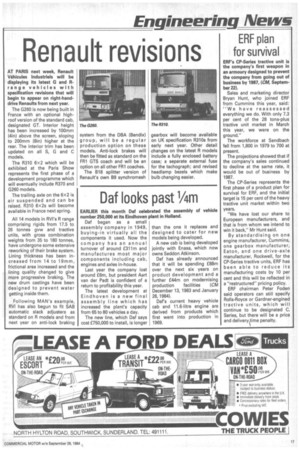ERF plan for survival
Page 19

If you've noticed an error in this article please click here to report it so we can fix it.
ERF's CP-Series tractive unit is the company's first weapon in an armoury designed to prevent the company from going out of business by 1987, (CM, September 22).
Sales and marketing director Bryan Hunt, who joined ERF from Cummins this year, said: "We have reassessed everything we do. With only 7.3 per cent of the 28 tons-plus tractive unit market in March this year, we were on the ground."
The workforce at Sandbach fell from 1,800 in 1979 to 700 at present.
The projections showed that if the company's sales continued to decline at the same rate, it would be out of business by 1987.
The CP-Series represents the first phase of a product plan for survival for ERF, and the initial target is 15 per cent of the heavy tractive unit market within two years.
"We have lost our share to European manufacturers, and that is from whom we intend to win it back," Mr Hunt said.
By standardising on one engine manufacturer, Cummins, one gearbox manufacturer, Eaton, and one drive-axle manufacturer, Rockwell, for the CP-Series tractive units, ERF has been able to reduce its manufacturing costs by 10 per cent and this will be reflected in a "restructured" pricing policy.
ERF chairman Peter Foden said operators can still specify Rolls-Royce or Gardner-engined tractive units, which will continue to be designated C. Series, but there will be a price and delivery\time penalty.
















































































































